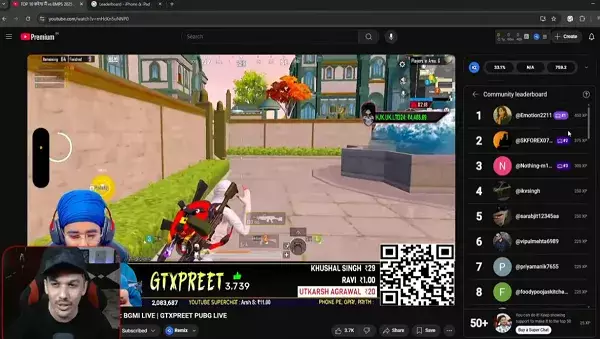YouTube has embarked on a fascinating experiment that introduces a gamified experience within its livestreams, adopting a leaderboard system designed to encourage viewer participation. This new approach leverages competitive elements that resonate strongly with audiences, primarily within the gaming community, which has traditionally thrived on similar incentives. By ranking viewers based on their engagement—measured through comments, Super Chats, and gifts—the platform seeks to enhance real-time interactions, turning passive viewing into a more participatory activity.
The core premise here is that engaging with livestreams will now come with tangible rewards. Viewers accumulating engagement points will not only receive visibility through their participation but will also earn a crown icon, a symbol of their dedication during streams. The allure of recognition is powerful; it taps into human psychology by fostering a sense of community among participants. Those who stand out as the top three engaged viewers will receive badges, potentially increasing their desirability as contributors to the content creator’s channel. In an era where audience interaction can lead to significant revenue, this maneuver could redefine the dynamics of livestreaming.
A Double-Edged Sword: Implications for Creators and Viewers
For creators, the gamification strategy is undeniably appealing. Increased interaction can lead to heightened visibility and profitability, especially with the integration of additional paid features such as Super Chats and Stickers, from which creators can earn a share. However, the underlying question persists: Does turning viewer engagement into a competition cheapen the experience? While the strategy is poised to boost viewer retention and participation, it risks prioritizing quantitative interaction over meaningful connections. Engaged viewers could easily become motivated solely by the desire for ranking rather than genuine engagement with the content.
Furthermore, there’s a concern about inclusivity. While the competitive edge may invigorate participation, what happens to viewers who shy away from these rankings? By allowing users to opt out of the leaderboard, YouTube faces the challenge of balancing competitive engagement with fostering a welcoming environment for all viewers. If the platform does not navigate this carefully, it might inadvertently alienate participants who prefer a more casual observer role.
A Sign of the Times: Evolving Interaction Methods
As the digital landscape evolves, so do viewer expectations. Users are increasingly looking for interactive, dynamic experiences across various platforms, particularly within livestream contexts where real-time conversation is key. YouTube’s push for a gamified experience reflects these shifting trends, recognizing the importance of adapting to what makes audiences tick. While the gaming community has led the charge in integrating competitive elements into social interactions, it’s noteworthy that such strategies could be implemented across various genres of livestreams, extending beyond just gaming.
Despite criticisms regarding perceived artificiality, the integration of a leaderboard is, at its heart, a recognition that engagement is crucial in this saturated digital space. For many users, standing out amid a sea of usernames offers the thrill of competition, blending traditional viewing experiences with interactive gaming mechanics. Ultimately, YouTube’s experiment may well echo broader trends in digital interaction, merging entertainment with social connectivity in the quest to captivate modern audiences.


Leave a Reply